Microplastics in the Baltic sea water.
Distribution of microplastics particles (MPs) in the water column is investigated on the base of 95 water samples collected from various depths in the Baltic Sea Proper in 2015–2016.
Fibres are the prevalent type of MPs: 7% of the samples contained small films; about 40% had (presumably) paint flakes, while 63% contained coloured fibres in concentrations from 0.07 to 2.6 items per litre. Near-surface and near-bottom layers (defined as one tenth of the local depth) have 3–5 times larger fibre concentrations than intermediate layers. Laboratory tests demonstrated that sinking behaviour of a small and flexible fibre can be complicated, with 4-fold difference in sinking velocity for various random fibres’ curvature during its free fall.
Numerical tests on transport of fibres in the Baltic Sea Proper were performed using HIROMB reanalysis data (2007) for the horizontal velocity field and laboratory order-of-magnitude estimates for the sinking velocity of fibres. The model takes into account (i) motion of fibres together with currents, (ii) their very slow sinking, and (iii) their low re-suspension threshold.
Sensitivity of the final distribution of fibres to variations of those parameters is examined. These experiments are the first step towards modelling of transport of fibres in marine environment and they seem to reproduce the main features of fibres distribution quite well.

Plastic pollution on the Baltic beaches of the Kaliningrad region
(Esiukova E. Plastic pollution on the Baltic beaches of the Kaliningrad region, Russia. 2017. Mar. Pollut. Bull. 114, 1072–1080. http://dx.doi.org/10.1016/j.marpolbul.2016.10.001)
Highlights:
- The wrack line of the beaches of the Kaliningrad region has about 1.3–36.3 microplastic pieces per kg DW.
- The prevailing type of microplastic pollution discovered is foamed plastic.
- Paraffin, collected at the beach wrack lines, is an effective accumulator of contamination, including microplastics.
- No sound difference in contamination is found between beaches with high and low anthropogenic load.

Microplastics in Baltic Bottom Sediments
(Zobkov M., Esiukova E. Microplastics in Baltic Bottom Sediments: quantification procedures and first results. Marine pollution bulletin. 114. 2017. P.724–732. http://dx.doi.org/10.1016/j.marpolbul.2016.10.060)
Highlights:
- Modification to NOAA Laboratory Methods for microplastic quantification is proposed.
- Suggested modifications increase the extraction efficiency up to 92±7%.
- Laboratory quality control procedures are introduced into laboratory workflow.
- Plastic films seem to be easier transported by currents than plastic fragments.
- Bottom sediments near the shore of the Gdansk Bay have 34±10 microplastics/kg DW.

R/V ‘Professor Shtokman’, cruise 131, March 30 – April 2, 2016
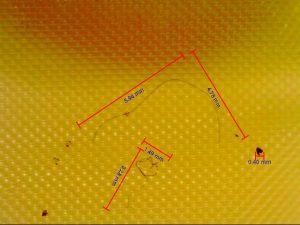
Filters of water collected in the Gdansk Basin. Results of microscopic analysis of filters of 10-l water samples collected in 131 cruise of r/v “Professor Stokman” show that tiny film fragments, fibres and paint flakes are present at all the horizons of water body in the Gdansk basin.
R/V ‘Academic Nikolay Strakhov’, cruise 32 (1) and 32 (3), August 3 – 14 and September 5-12, 2016
36 water samples were obtained and analyzed using light microscope with tenfold magnification. The visual examination of the filters taken from the bottom layers showed that they are clean, with the number of particles and fibres from 0 to 2 pieces per sample. In the surface water samples, the crumpled organic matter, large number of fibres of different colors and sizes, and particles of paint are observed. In first stage of cruise, the fibres were detected in 10 samples, flakes of paint were revealed in 11 samples while in the third stage of cruise, the fibers were indicated in 11 samples, flakes of paint – in 8 samples correspondingly. The colors of fibers are red, blue, and green, with the sizes ranging from 0.5 to 10 mm and thickness of 10 mcm. Apart from the fibers, several semitransparent films of greenish color at surface water layer and single sticky whitish sheet at the lower level were found with sizes of 1.5 mm and 1 mm respectively. The whitish sheet was destroyed easily while touching by needle.
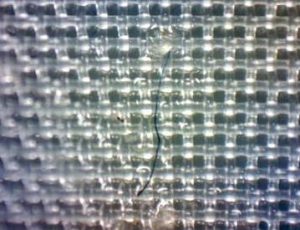
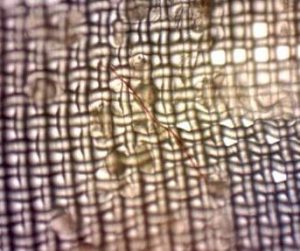
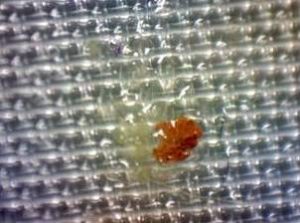
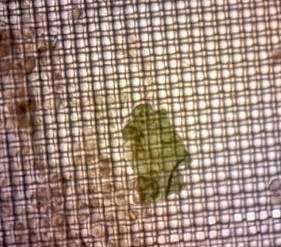
The examples of microplastic particles detected after water samples filtration taken during both of cruises: upper panel – fibers; lower left picture – film, lower right picture – flake of paint.
R/V ‘Nord-3’, March 30, 2016
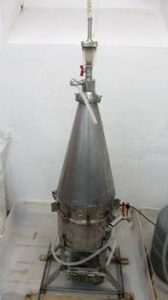
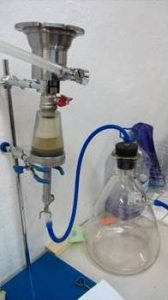
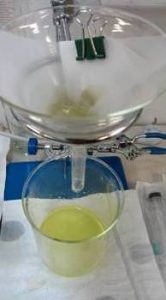
Cameral treatment of bottom sediment samples made by separator (photos by E. Esiukova).
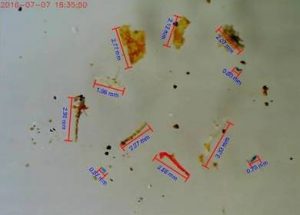
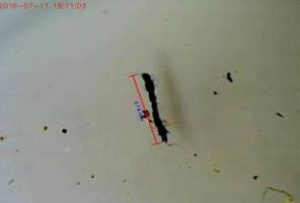
Microplastic particles obtained after treatment of bottom sediment samples by separator (cameral treatment and photos by E. Esiukova).
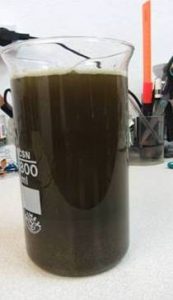
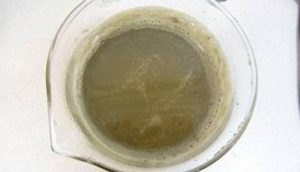
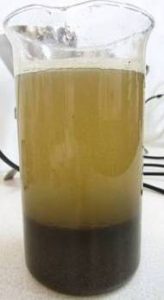
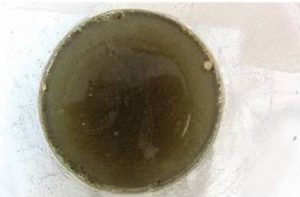
Microplastic analysis in the sediments was performed using National Oceanic and Atmospheric Administration Laboratory Methods for quantifying synthetic particles in water and sediments method (NOAA methods). Analysis consists of a five main steps: extraction, wet peroxide oxidation, calcite fraction digestion, density separation and microplastics detection (cameral treatment and photos by E. Esiukova).
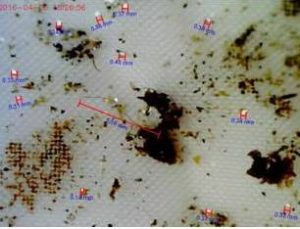
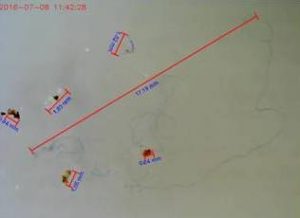
R/V ‘Nord -3 ‘, October 30, 2015
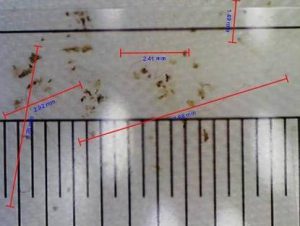
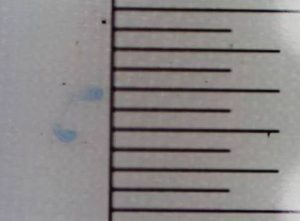
Fibers, amber crumbs and blue rocker.
Analysis of water samples show that the very tiny particles and probably amber crumbs with specific color are observed on the filters. There is no excessive amount of plankton, algae, sticks, and other particles related to the microplastics.
R/V ‘Nord – 3’, November 3, 2016
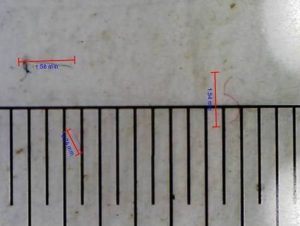

Analysis of water samples show that the majority of microplastic particles is fibres (93%); the background concentration of microplastics was determined based on results of water samples treatment. The increase in microplastics concentration at two stations in the deep part of the section was revealed; the probable reason is the sea disposal from Yantarny.
